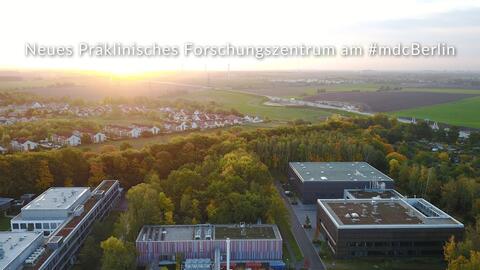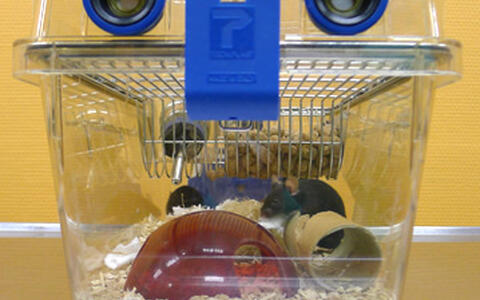
Animal Facilities
Breeding, husbandry, hygiene and health of the laboratory animals and counseling for the scientists
Our tasks are – among others – the organisation of the breeding and holding of the laboratory animals, the protection of hygienic and health status of the animals, the import and export of laboratory animals, the education of animal care takers, and the counseling of scientists regarding their experimental animal projects.
Animal houses at the Max Delbrück Center
The Max Delbrück Center has three animal houses with space for approximately 60,000 mice and 2,200 rats:. We currently have 17,400 mouse cages (housing roughly 52,200 mice with an average of three mice per cage) and 1,080 rat cages (housing roughly 2,160 rats). To keep up with the rapid advances in science and the growing number of our research groups, we constantly update our animal houses to ensure they comply with the latest standards.
New preclinical research building (PRC)
The Max Delbrück Center has opened a new center for preclinical research – the PRC, formerly known as the IPL. This laboratory will provide space for 4,000 mouse cages. The addition of the PRC will not increase our animal housing capacity. Rather, the existing animals/cages will be redistributed internally and one of the three current animal houses will no longer be used for our animal-keeping purposes.

The PRC will take into account the latest findings on improved animal care practices and use state-of-the-art testing procedures. We place a particular emphasis on considerate, non-invasive examination methods, including imaging techniques such as ultrasound and magnetic resonance therapy (MRT). The older animal houses do not provide sufficient laboratory space for this kind of modern equipment. The IPL is primarily designed for the conduct of long-term rodent studies.
Housing conditions
Mice are social creatures and are therefore kept in small groups. They live in Perspex boxes with bedding and toys (technically known as “environmental enrichment”).
Mice are social creatures and are therefore kept in small groups. They live in Perspex boxes with bedding and toys (technically known as “environmental enrichment”).
All test animals live in standardized conditions where temperature, humidity, and hours of light and darkness are maintained at a constant level all year round. Mice and rats are kept in individually ventilated cage systems under so-called “barrier conditions” to ensure that they don’t come into contact with pathogens.
Our cage systems are strictly sealed off from the outside world and are ventilated with sterile filtered air. Food, bedding and water – everything that the animals require – are sterilized before they are brought into the animal housing area. All personnel must shower and put on sterile clothing before they are permitted to pass through the barriers into the facilities. All tests conducted on the animals are carried out under sterile laboratory conditions. This protects the animals from infections and ensures that no pathogens find their way out of the animal cages and into the outside world. Maintaining these barrier conditions requires high-tech equipment and highly specialized building service installations.
Animal care duties
Our animal care staff is responsible for checking that animals have water and food every day, making sure they are in good health, and cleaning their cages once a week. Kept in this way, a laboratory mouse can live for up to three years. In the wild, the life expectancy of a mouse is around six months.
In addition to their daily tasks, the animal house teams take on a variety of service tasks to assist research activities. These include scheduling mating, supervising breeding including bookkeeping, marking animals, and taking the blood and tissue samples needed for the research.
Animal welfare legislation
The care of laboratory animals is regulated by law (which determines the size of cages, the number of animals per cage, cage set-up, etc.). We have six animal welfare officers at the Max Delbrück Center who monitor compliance with these regulations. Together with the care staff and scientists, these animal welfare officers are responsible for quickly recognizing and rectifying any possible shortcomings. Our animal houses are also regularly inspected by the animal welfare authorities. During animal experiments, animal welfare officers ensure that standards are being met and remain on-hand to advise scientists.

